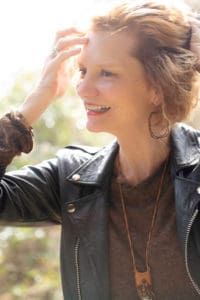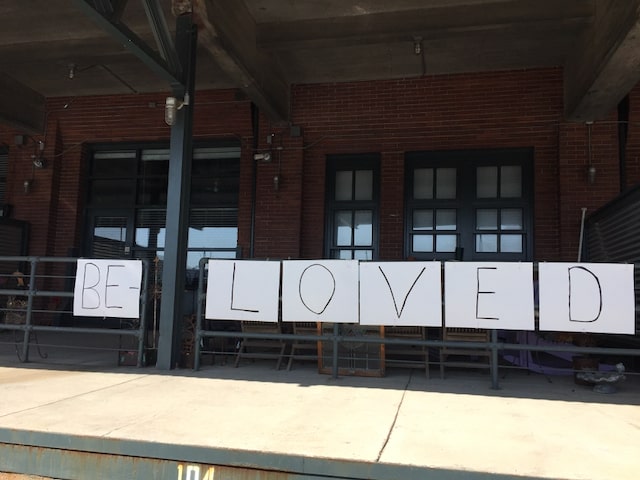
Safe Space, An Error
We sat around the table at Caritas Village. The time was the early 2010s, the place Memphis. We were in the back room behind the grey folding partition conducting our Memphis School for Servant Leadership Board meeting. We were probably eating chips or brownies or other snacks Board members brought for meetings. As the Board chair reviewed the Parker Palmer method of discussion, the issue of safe space arose.
The school’s classes all used the Parker Palmer method. Palmer’s method held that spiritual advancement and connection happened when the “shy soul” revealed itself. The soul, being shy, would not reveal itself unless it was certain it wouldn’t be hurt. Thus, the guiding principle for the school’s classes was to create a safe place for participants.
A member of the Board interrupted the description.
“That safety claptrap is white people claptrap,” she said.
Of course, she said it much more diplomatically. But her point was that in our servant leadership classes, Black and white folks talked about race. In that context, creating “safety” for white folks meant Black folks were not free to say something that might make white folks uncomfortable. And white folks couldn’t grow in their anti-racism unless—98% chance likely—they felt uncomfortable. So creating a safe space for white folks would beat out truth-telling.
The Board member’s other point was that, for most of our country’s history, safety has been a value only available to white folks. White people valued safety, and safety benefited white people. Not a good outcome for classes on dismantling racism. Of course, Parker Palmer is white. The Board member is Black.
Safe Space or Brave Space
I think of this conversation often these days. Because anti-racism circles now almost universally accept as their guiding principle creating “brave” space, not “safe” space. The reasoning behind this is exactly what the Board member voiced over ten years ago. I’ve heard it put, “For there is no such thing as safe space.”
A couple of weeks ago I wrote to the Board member. I told her how much I owed to her for my advancement in understanding racism. And how many things beings said today, I recognize from her so many years ago. I used the “safe space” conversation as an example. She told me that comment had not been welcome. In fact, others told her it was inappropriate to bring up in a mixed group of Black and white folks. Not even on this Board dedicated to ending racism.
Or White Space?
The point: we whites often pursue dismantling racism in a racist way. Because we don’t know any better. Or we can’t see the harm. Sometimes we don’t like being corrected. Or our core values are so imbedded, we don’t see they are actually optional values chosen by us for a reason. Ultimately, when we are in charge, what we create too often is not safe space or brave space, but white space.

anti-racism, anti-racism classes, brave space, Parker Palmer, safe space, the shy soul, white space
Marsha Van Hecke
WOW! Tell it! Name it!
Ellen Morris Prewitt
It really took on a sacred cow, criticizing Parker Palmer. Eye-opening.
Joanne Corey
Reading this made me realize that my personal interpretation of a safe space must be different from most other people’s. I think of it as being safe for an individual to say what they are thinking and feeling without anyone reproaching them or telling them they shouldn’t feel that way. It honestly never occurred to me that everyone in the room expected to feel “safe” or comfortable at all times. I admit that I don’t know anything about Parker Palmer method; I was just going from experience of being in discussion groups. In spiritual discussion, our mode was generally that each person spoke from their own experience and others could ask them to tell more about their viewpoint but would not diminish or argue.
I must also admit that I very seldom feel safe/comfortable in groups, no matter how welcoming, due to my introversion, so that may be a factor in my interpretation of safe space as well. I expect to be uncomfortable in a group, regardless of what any other participant may share.
Ellen Morris Prewitt
Your interpretation is so much better than the way Parker Palmer is typically explained. At the time, I had done years with Parker Palmer groups, including a 9 month formation group at Memphis Theological Seminary, which I expect has been updated. Thus my shock at someone assailing this sacred cow. To its credit, the Parker Palmer method does rely on what you describe in asking a speaker to say more, the focus being on helping the speaker more fully understand what they think. I really love this feeling of keeping the energy on the speaker as a gift, never asking questions you think you know the answer to (evidence of your own agenda, rather than focusing on them.)
But it is all definitely fraught, the attempt to moderate what is (or isn’t said) in difficult conversations. Even the “oops/whoops” method (I realize I said something hurtful/you said something hurtful to me) can easily lead to argumentative back and forth (“I have to say whoops to what you said.” “Well, I definitely felt a whoops inside what YOU just said.”) Even when I posted this blog post on the more-moderated Mastodon, a reader suggested the critique of “safe space” might warrant a content warning. But we trundle forward…
Joanne Corey
I was really interested by this concept: “the focus being on helping the speaker more fully understand what they think.” In the contemplative listening model to which I’m accustomed, it’s assumed that the speaker already understands what they are relating. The purpose of asking them to tell more is for the listeners to gain a greater depth of understanding.
I’m trying to wrap my head around a content warning for this post. It seems ironic from my vantage point but I’m obviously not in the kind of groups where these sorts of topics are discussed.
Ellen Morris Prewitt
Ha, ha–yes the irony of a CW on this wasn’t lost on me either. 🙂